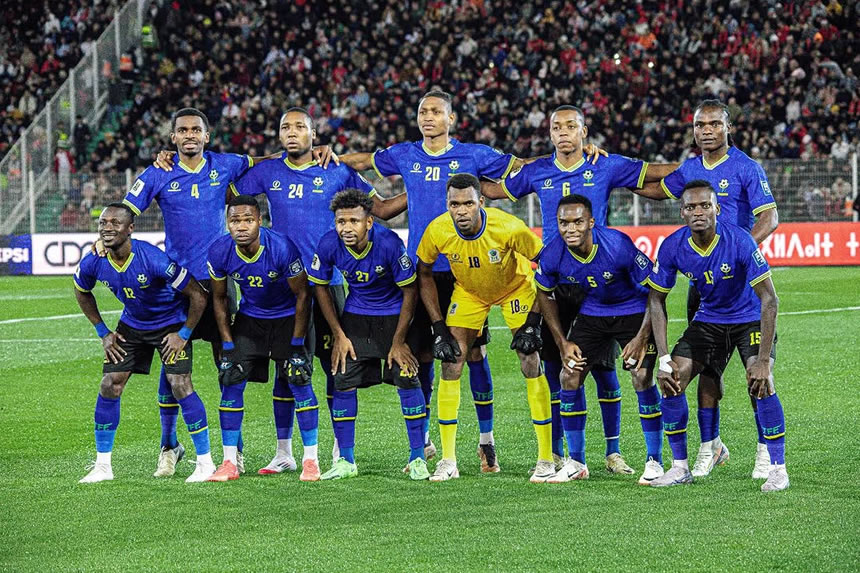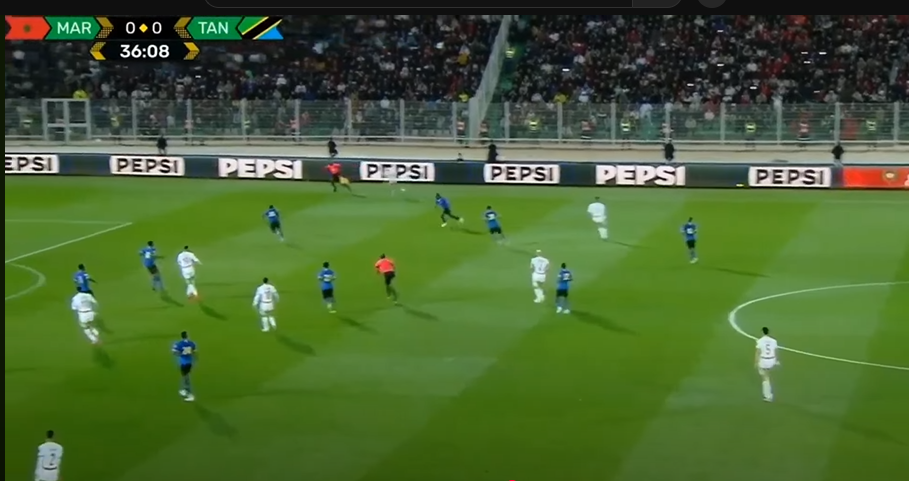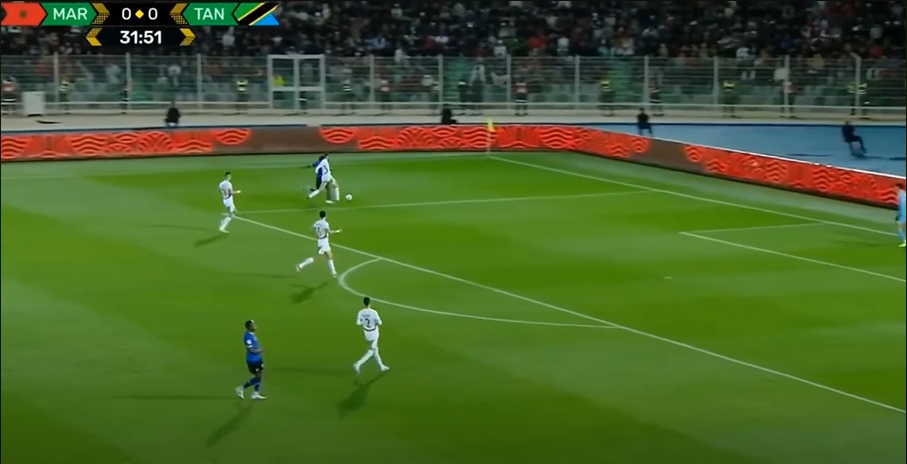Morocco 2-0 Tanzania, Post-Match Tactical Analysis
Sisti Herman
March 26, 2025
Share :

The international match of FIFA World Cup 2026 Qualifications between Morocco and Tanzania ended with the hosts, Morocco, winning 2-0.
Morocco's goals came from set pieces: one from a corner and another from a penalty.
Why didn’t these teams score in open play?
Here is my tactical assessment of both teams (Post-Match Tactical Analysis):
Given the quality of both sides, the teams shared periods of tactical dominance:
- Morocco, with their quality, deserved to dominate possession and space with the ball (In Possession domination).
- Tanzania, with their quality, chose to dominate defensively, often staying behind the ball in their own half (Out of Possession domination).
Tanzania Difensive Masterclass
Tanzania’s strength without possession stemmed from their system and playing style, employing the following tactics:
- They adapted their 4-2-3-1 formation into a 4-4-2 to block Morocco’s passing lanes.
- They pressed lightly to force Morocco into mistakes, tightening up in their final two-thirds of the pitch and staying compact.
In their 4-4-2 structure, they blocked Morocco’s dangerous pathways to goal, for example:
- Msuva and Fei formed the first line of defense, pressing Morocco’s center-backs, Aguerd and Yamiq, and their midfielder Amrabat.
- Kibu Denis and Mzize effectively blocked the flanks, working hard to move forward or alongside Zimbwe and Kapombe to prevent Morocco’s wide players (full-backs and wingers) from creating 2v1 situations against Tanzania’s full-backs.
- Novatus and Mudathir worked to close down spaces for Morocco’s attacking midfielders, preventing them from playing forward or between the lines of Tanzania’s defense.

Job and Baka fought hard to win every duel, both in the air and on the ground, against Morocco’s forwards.
This defensive structure from Tanzania (the Stars) was effective, limiting Morocco’s ability to easily reach their goal through central, wide, or aerial routes, where
Morocco Possession domination
- Morocco played with a 2-3-2-3 shape (derived from a 4-3-3 system).
- When in possession in Tanzania’s half, Morocco stretched the pitch, spreading players into key areas to stretch Tanzania’s structure—wide areas, between the lines, and up top.
- After failing to break through Tanzania’s defensive lines, Morocco’s quality allowed them to force opportunities from set pieces, with a corner and a penalty leading to their goals.
Tanzania weakness on Offensive Transitions
Tanzania’s shortcomings after dominating defensively were in their ability to counter-attack, where their responses were often hampered by:
- Outnumbered: They struggled to commit enough players forward.
- Efficiency: They lacked precision in actions like passing.

- Speed: They couldn’t match Morocco’s pace in transitioning back to their optimal defensive shape.
Morocco strengh on Difensive Transitions
Morocco’s quality shone through here:
- Their ability to neutralize Tanzania’s counter-attacks.
- Their success in winning set-piece opportunities.
Morocco employed superior tactics to stifle counter-attacks, such as:
- High pressing immediately after losing the ball to force Tanzania into inefficiency (Counter Pressing).
- A solid rest defense structure, where their 2-3-2-3 shape included a 2+3 setup in the back two lines, effectively absorbing Tanzania’s counter-attacks.
For Swahili Podcast Analysis Click here;





